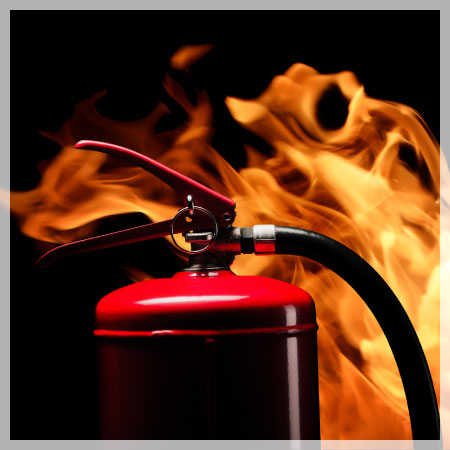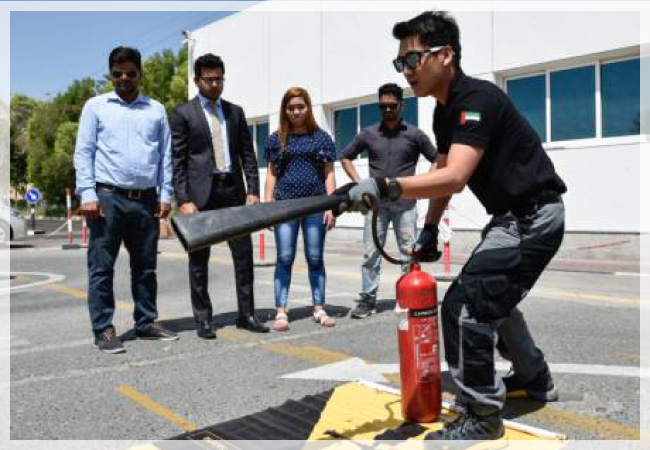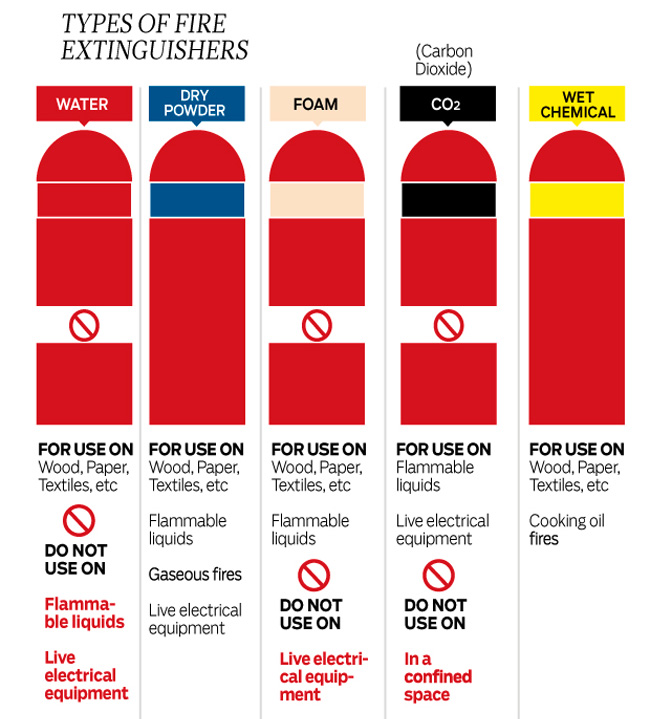Currency
August 09, 2017

When using a fire extinguisher, remember: PULL, AIM, SQUEEZE, and SWEEP
If you’re not trained in fire safety, chances are that you don’t know where the fire extinguisher nearest to you is. Worse, you have no idea how to use it even if it is nearby.
A fire extinguisher is the best first defence in the event of a fire. If using one indoors, take note of any wind source. If outdoors, first check the wind direction.

You must be on the windward direction. Meaning, if the wind is coming from the east, use the extinguisher from that side,” said trainer Christian Beltran from Al Salama Fire Safety Training.
If the wind direction is not taken into consideration, the person using the fire extinguisher can get hurt.
Hold the neck of the fire extinguisher and remember P-A-S-S
1. PULL the pin.
2. AIM the nozzle at the base of the fire. Go to where the fire is but maintain a safe distance.
3. SQUEEZE the lever to activate the extinguisher.
4. SWEEP from side to side from the base of the fire. Check if the fire is out and walk back. Otherwise, do step 4 again.
It’s important to keep safe distance from the fire while extinguishing it. A carbon dioxide fire extinguisher, for example, requires a 1- to 3-metre safe distance when being used.
The most common types of fire extinguishers used on different types of fire fuels are:
WATER FIRE EXTINGUISHER
Water fire extinguishers douse fires by taking away the heat element of the fire triangle. They're used for Class A fires only.
DRY CHEMICAL FIRE EXTINGUISHER
Dry chemical extinguishers extinguish the fire by interrupting the chemical reaction of the fire triangle. They're most effective on Class A, B and C fires.
CO2 FIRE EXTINGUISHER
Carbon dioxide extinguishers take away the oxygen element of the fire triangle. They also remove the heat with a cold discharge. They can be used on Class B and C fires.
And because all fires are fueled differently, there's a variety of extinguishers based on the fire type. Some extinguishers can be used on more than one class of fire, while others warn against the use of specific class extinguishers.
Here's a breakdown of fire extinguishers classified by type:
Class A fire extinguisher
Class A extinguishers are used for fires involving ordinary combustibles, such as wood, paper, cloth, trash and plastics.
Class B fire extinguisher
Class B extinguishers are used for fires involving flammable liquids, such as grease, gasoline and oil.
Class C fire extinguisher
The Class C extinguishers are used for fires involving electrical equipment, such as motors, transformers and appliances.
Class D fire extinguisher
Class D extinguishers are used for fires involving combustible metals, such as potassium, sodium, aluminum and magnesium.
Class K fire extinguisher
The Class K extinguishers are used for fires involving cooking oils and greases, such as animal and vegetable fats. It's important to remember that each fire requires a different extinguisher based on the circumstances.
And if you're going to use an extinguisher, just remember PASS: pull the pin, aim the nozzle or hose at the base of the fire, squeeze the operating level to discharge the extinguishing agent and sweep the nozzle or hose from side to side until the fire is out.

1. When buying fire extinguishers for your home: choose extinguishers labeled "ABC," which means they are broad-spectrum and can combat all different kinds of fires. Also look for the seal of an independent testing organization to make sure the extinguisher is high quality.
2. Make sure they have gauges on them that tell you how much of the fire-fighting chemicals is left in the canister.
3. Get the largest, heaviest fire extinguisher you can comfortably handle, so you'll have more fire-fighting power.
4. Store your fire extinguishers near the exits of the rooms they are in, so you can fight the fire from a location where there's a clear path to get out. Make sure they are easy to grab, not trapped behind other belongings.
5. Read the instructions that come with the fire extinguisher and become familiar with its parts and operation before a fire breaks out. Local fire departments or fire equipment distributors often offer hands-on fire extinguisher trainings.
6. Get every other member of the family out of the house and have them call 911. Meanwhile, if the fire is not spreading, is confined to a small area, and the room is not filled with smoke, use the appropriate type of extinguisher on the fire.
7. Know both your limits and the fire extinguisher's limits. The best way to think of fire extinguishers is as an aid in getting out alive rather than a device to douse a fire completely.
8. Periodically inspect your extinguishers to determine if they need to be recharged or replaced. Look at the gauge to see if there is ammunition left.
9. Extinguishers need to be recharged or replaced after each use - even if you haven't used the entire extinguishing agent. Check the gauge on the fire extinguisher for this information.
10. When using a portable extinguisher, always keep your back to an unobstructed exit that is free from fire. This will allow a clear path to an exit.
For those who can’t carry the whole fire extinguisher from its cradle to where the fire is, they can drag it and follow the same principles above.









